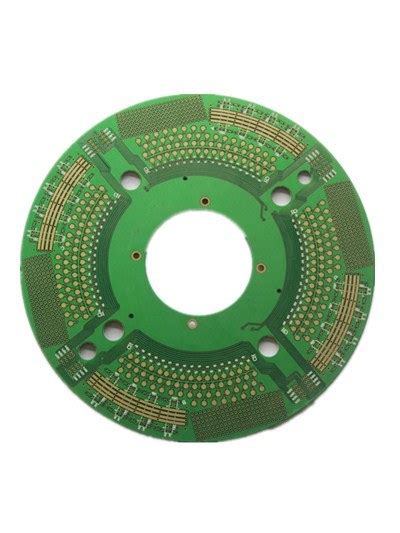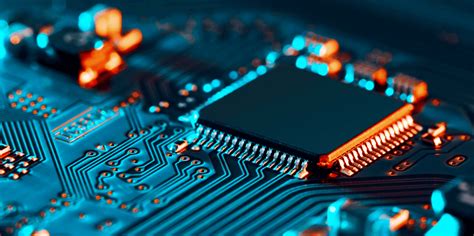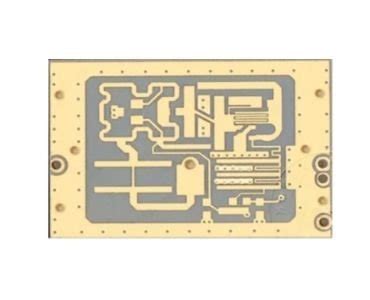Making multilayer pcb
Understanding The Basics Of Multilayer PCB Design
In the realm of modern electronics, the demand for compact, efficient, and high-performance devices has led to the widespread adoption of multilayer printed circuit boards (PCBs). Understanding the basics of multilayer PCB design is crucial for engineers and designers aiming to create sophisticated electronic systems.
At its core, a multilayer PCB consists of multiple layers of conductive material, typically copper, separated by insulating layers known as substrates.
This configuration allows for a higher density of components and interconnections compared to single-layer or double-layer PCBs, making them indispensable in advanced applications such as telecommunications, aerospace, and consumer electronics.
To begin with, the design process of a multilayer PCB involves several critical steps, starting with the conceptualization of the circuit.
This phase requires a thorough understanding of the device’s functional requirements and the electrical characteristics needed to achieve them. Designers must consider factors such as signal integrity, power distribution, and thermal management, which are inherently more complex in multilayer configurations. Once the conceptual framework is established, the next step involves schematic capture, where the circuit is translated into a digital format using specialized software. This schematic serves as a blueprint for the subsequent stages of design and fabrication.
Transitioning from schematic capture to layout design, the focus shifts to the physical arrangement of components and routing of electrical connections across the multiple layers.
This stage is particularly challenging due to the need to optimize space while minimizing electromagnetic interference and crosstalk between signals. Designers employ various techniques, such as via placement and layer stacking, to achieve an efficient layout. Vias, which are small conductive pathways that connect different layers, play a crucial role in facilitating interlayer communication. The strategic placement of these vias is essential to maintain signal integrity and ensure reliable performance.
As the design progresses, attention must be paid to the selection of materials for both the conductive and insulating layers.
The choice of substrate material, for instance, can significantly impact the board’s thermal and electrical properties. Common materials include FR-4, a glass-reinforced epoxy laminate, known for its excellent balance of performance and cost. However, for high-frequency applications, materials with lower dielectric constants and loss tangents may be preferred to reduce signal attenuation. Similarly, the thickness of the copper layers must be carefully chosen to handle the expected current loads without excessive heat generation.
Once the design is finalized, the fabrication process begins, involving a series of precise manufacturing steps.
These include layer lamination, drilling, plating, and etching, each requiring meticulous attention to detail to ensure the integrity of the multilayer structure. Quality control measures, such as automated optical inspection and electrical testing, are employed to detect any defects or inconsistencies that could compromise the board’s functionality.
In conclusion, the design and fabrication of multilayer PCBs are intricate processes that demand a comprehensive understanding of both theoretical principles and practical considerations. By mastering these basics, designers can create PCBs that meet the stringent demands of modern electronic devices, paving the way for continued innovation and advancement in the field. As technology continues to evolve, the role of multilayer PCBs will undoubtedly expand, underscoring the importance of expertise in this critical area of electronics design.

Key Considerations For Multilayer PCB Manufacturing
In the realm of electronics, the demand for compact and efficient devices has led to the increased use of multilayer printed circuit boards (PCBs). These complex structures, which consist of multiple layers of conductive material separated by insulating layers, offer enhanced functionality and performance compared to their single-layer counterparts. However, the manufacturing of multilayer PCBs involves several key considerations that must be meticulously addressed to ensure optimal performance and reliability.
To begin with, the design phase is crucial in multilayer PCB manufacturing.
Designers must carefully plan the stack-up configuration, which refers to the arrangement of conductive and insulating layers. This configuration directly impacts the board’s electrical performance, including signal integrity and electromagnetic compatibility. Therefore, selecting the appropriate materials for each layer is essential. High-quality dielectric materials with suitable dielectric constants and loss tangents are often chosen to minimize signal loss and crosstalk between layers. Additionally, the thickness of each layer must be precisely controlled to meet the specific electrical and mechanical requirements of the application.
Transitioning from design to fabrication, the manufacturing process itself presents several challenges.
One of the primary concerns is the alignment of layers. Misalignment can lead to short circuits or open circuits, compromising the board’s functionality. Advanced techniques such as optical alignment systems are employed to ensure precise layer registration. Furthermore, the drilling process, which creates vias to connect different layers, must be executed with high precision. Laser drilling is often preferred for its accuracy and ability to create small-diameter vias, which are essential for high-density interconnects.
Another critical aspect of multilayer PCB manufacturing is the lamination process.
During this stage, the individual layers are bonded together under heat and pressure. The choice of adhesive materials and lamination parameters significantly influences the board’s mechanical strength and thermal stability. It is imperative to achieve a uniform bond across the entire board to prevent delamination, which can occur due to thermal cycling or mechanical stress during operation.
Moreover, the testing and inspection phase is indispensable in ensuring the quality and reliability of multilayer PCBs.
Advanced testing methods, such as automated optical inspection (AOI) and X-ray inspection, are employed to detect defects that may not be visible to the naked eye. These techniques help identify issues such as misaligned layers, insufficient solder joints, or internal voids, allowing manufacturers to address potential problems before the boards are deployed in critical applications.
In addition to these technical considerations, environmental factors also play a significant role in multilayer PCB manufacturing.
The industry is increasingly focused on sustainability, prompting manufacturers to adopt eco-friendly practices. This includes the use of lead-free solder and halogen-free laminates, as well as implementing recycling programs for waste materials. By prioritizing environmental responsibility, manufacturers not only comply with regulations but also contribute to the global effort to reduce electronic waste.
In conclusion, the manufacturing of multilayer PCBs is a complex process that requires careful attention to various technical and environmental factors. From the initial design phase to the final inspection, each step must be meticulously executed to ensure the production of high-quality, reliable boards. As technology continues to advance, the demand for multilayer PCBs will only grow, making it imperative for manufacturers to stay abreast of the latest developments and best practices in the field.

Advantages Of Using Multilayer PCBs In Modern Electronics
In the rapidly evolving landscape of modern electronics, the demand for more compact, efficient, and high-performing devices has led to significant advancements in printed circuit board (PCB) technology. Among these advancements, multilayer PCBs have emerged as a pivotal innovation, offering numerous advantages over their single-layer counterparts. As electronic devices become increasingly complex, the benefits of using multilayer PCBs have become more pronounced, making them an essential component in the design and manufacture of contemporary electronic products.
One of the primary advantages of multilayer PCBs is their ability to support higher component density.
By stacking multiple layers of circuitry, these PCBs can accommodate a greater number of components within a smaller footprint. This is particularly beneficial in the development of compact devices such as smartphones, tablets, and wearable technology, where space is at a premium. The increased density not only allows for more complex circuitry but also contributes to the miniaturization of electronic devices, a trend that continues to dominate the consumer electronics market.
In addition to supporting higher component density, multilayer PCBs offer enhanced electrical performance.
The close proximity of the layers allows for shorter signal paths, which in turn reduces signal loss and improves overall signal integrity. This is crucial in high-speed applications where maintaining signal quality is paramount. Furthermore, the ability to incorporate multiple ground and power planes within the PCB stack-up helps to minimize electromagnetic interference (EMI), ensuring that the device operates reliably even in environments with significant electronic noise.
Another significant advantage of multilayer PCBs is their inherent design flexibility.
Designers can create more intricate and sophisticated circuit layouts by utilizing multiple layers, which can be tailored to meet specific performance requirements. This flexibility is particularly advantageous in the development of advanced technologies such as 5G communication systems, where precise control over signal routing and impedance is essential. Moreover, the ability to integrate various functionalities within a single PCB reduces the need for additional interconnections, thereby simplifying the overall design and assembly process.
The reliability and durability of multilayer PCBs also contribute to their widespread adoption in modern electronics.
The use of multiple layers provides additional mechanical strength, making these PCBs more robust and less prone to damage from physical stress or environmental factors. This is especially important in applications where the device is subject to harsh conditions, such as in automotive or aerospace industries. The enhanced durability of multilayer PCBs ensures that electronic devices can withstand the rigors of everyday use, thereby extending their operational lifespan.
Furthermore, the use of multilayer PCBs can lead to cost savings in the long run.
Although the initial manufacturing cost may be higher compared to single-layer PCBs, the benefits of reduced size, improved performance, and increased reliability can result in lower overall production costs. The ability to integrate multiple functions into a single board reduces the need for additional components and interconnections, which can significantly decrease assembly time and labor costs.
In conclusion, the advantages of using multilayer PCBs in modern electronics are manifold. From supporting higher component density and enhancing electrical performance to offering design flexibility and ensuring reliability, these PCBs have become indispensable in the development of cutting-edge electronic devices. As technology continues to advance, the role of multilayer PCBs in shaping the future of electronics is set to become even more significant, driving innovation and enabling the creation of increasingly sophisticated and efficient products.

Common Challenges And Solutions In Multilayer PCB Fabrication
In the realm of electronics manufacturing, multilayer printed circuit boards (PCBs) have become indispensable due to their ability to support complex circuitry in a compact form. However, the fabrication of multilayer PCBs presents a unique set of challenges that manufacturers must navigate to ensure functionality and reliability. Understanding these challenges and their corresponding solutions is crucial for anyone involved in the design and production of multilayer PCBs.
One of the primary challenges in multilayer PCB fabrication is maintaining precise alignment between the layers.
As the number of layers increases, so does the complexity of ensuring that each layer is perfectly aligned with the others. Misalignment can lead to circuit failures and reduced performance. To address this issue, manufacturers employ advanced registration systems that use optical alignment techniques. These systems ensure that each layer is accurately positioned before lamination, thereby minimizing the risk of misalignment.
Another significant challenge is the management of thermal stress during the lamination process.
The heat and pressure applied during lamination can cause warping or delamination, especially in boards with a high layer count. To mitigate this, manufacturers use materials with compatible coefficients of thermal expansion (CTE) and employ controlled lamination cycles. By carefully managing the temperature and pressure, they can reduce the risk of thermal stress and ensure the structural integrity of the PCB.
The aspect of via formation also presents a challenge in multilayer PCB fabrication.
Vias, which are used to connect different layers of the board, must be precisely drilled and plated to ensure reliable electrical connections. The challenge lies in achieving the correct aspect ratio, especially in boards with a high layer count and reduced thickness. To overcome this, manufacturers utilize advanced drilling techniques such as laser drilling, which allows for the creation of smaller and more precise vias. Additionally, the use of high-quality plating processes ensures that the vias are adequately filled and electrically conductive.
Signal integrity is another critical concern in multilayer PCB fabrication.
As the complexity of the circuitry increases, so does the potential for signal interference and loss. This is particularly problematic in high-frequency applications where even minor disruptions can lead to significant performance issues. To address this, designers must carefully plan the layer stack-up and routing to minimize crosstalk and impedance mismatches. The use of simulation tools during the design phase can help identify potential signal integrity issues and allow for adjustments before fabrication.
Furthermore, the inspection and testing of multilayer PCBs pose their own set of challenges.
Due to the complexity and density of these boards, traditional inspection methods may not be sufficient to detect all potential defects. Advanced testing techniques such as automated optical inspection (AOI) and X-ray inspection are employed to ensure that the boards meet the required quality standards. These methods allow for the detection of hidden defects that could compromise the board’s performance.
In conclusion, while the fabrication of multilayer PCBs is fraught with challenges, advancements in technology and manufacturing processes have provided effective solutions. By addressing issues such as layer alignment, thermal stress, via formation, signal integrity, and inspection, manufacturers can produce reliable and high-performance multilayer PCBs. As the demand for more complex and compact electronic devices continues to grow, the ability to overcome these challenges will remain a critical factor in the success of PCB fabrication.






